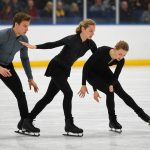Exercise sequence influences hormonal responses, impacting your workout’s overall effectiveness. Selecting the right order can enhance muscle engagement, optimize fat loss, and boost recovery. Each exercise affects hormone levels differently, shaping your body's adaptation to training. This guide explores how to strategically design your routine for optimal hormonal balance, ensuring you maximize results and achieve your fitness goals efficiently. Understanding this connection empowers you to tailor your workouts, taking your performance to new heights. Prepare to transform your approach and unlock the full potential of your exercise regimen.
Overview of Hormonal Responses to Exercise
When engaging in physical activity, the hormonal response plays a crucial role in determining the exercise impact and subsequent fitness outcomes. Key hormones such as testosterone, cortisol, and growth hormone are significantly involved in this process.
Have you seen this : Unlocking Muscle Resilience: The Physiological Advantages of Plyometric Circuit Training
Testosterone, often associated with muscle growth, is crucial for enhancing muscle protein synthesis, which aids in building and repairing muscle tissues. This hormone is particularly important for strength training, as it helps increase muscle mass and strength.
On the other hand, cortisol, known as the stress hormone, is released in response to physical stress. While it helps in energy regulation and metabolism, excessive levels can lead to muscle breakdown and hinder recovery. Therefore, managing cortisol levels is vital for optimal fitness outcomes.
Also to see : Unlocking Muscular Power: Leveraging Variable Resistance Training for Optimal Performance
Growth hormone is another critical player, promoting tissue growth and fat metabolism. It helps in the recovery and repair of muscles post-exercise, contributing to improved muscle tone and fat loss.
Maintaining a balanced hormonal response is essential for achieving desired fitness outcomes. An imbalance can lead to suboptimal results, affecting muscle growth, fat loss, and overall recovery. Understanding these hormonal dynamics can empower individuals to tailor their exercise routines for better health and fitness.
The Role of Exercise Sequence in Hormonal Response
Understanding the exercise sequence is crucial for effective hormonal regulation during workouts. The order in which exercises are performed can significantly influence the release of key hormones, impacting overall fitness outcomes.
Mechanisms of Exercise Order
The sequence of exercises affects hormonal release through various physiological mechanisms. For example, starting with strength training exercises can elevate testosterone levels, priming the body for subsequent activities. This sequence enhances muscle protein synthesis, optimizing muscle growth and repair. Conversely, beginning with endurance exercises may elevate cortisol levels, potentially leading to increased metabolic stress if not managed properly.
Comparing Exercise Types
Different types of exercise, such as endurance versus strength training, elicit distinct hormonal responses. Strength training typically boosts testosterone and growth hormone levels, facilitating muscle hypertrophy and recovery. Endurance exercises, however, often increase cortisol, which can be beneficial for energy regulation but may require careful management to prevent muscle breakdown.
Impact on Metabolic Stress
The structure of a workout, including the exercise sequence, can also affect metabolic stress. A well-planned sequence can balance hormonal responses, reducing excessive cortisol release and promoting optimal recovery. By tailoring the exercise order, individuals can achieve a more effective workout, enhancing both performance and fitness outcomes.
Evidence from Research Studies
Research studies provide valuable evidence-based insights into the relationship between exercise sequence and hormonal responses. These studies consistently demonstrate that the order of exercises can significantly affect the hormonal milieu during and after workouts.
Summary of Key Research Findings
One prominent study highlighted that starting with compound exercises—which engage multiple muscle groups—can lead to a more pronounced release of testosterone compared to beginning with isolation exercises. This elevated hormonal response facilitates greater muscle protein synthesis, enhancing muscle growth and recovery.
Comparing Various Workout Sequences
Further research comparing different workout sequences reveals that alternating between compound and isolation exercises can optimize hormonal response data. For instance, a sequence incorporating both types of exercises may balance the release of testosterone and cortisol, promoting effective muscle development and energy regulation.
Implications for Training Regimens
These findings underscore the importance of strategically planning exercise sequences. By leveraging evidence from research studies, individuals can tailor their training regimens to maximize hormonal benefits. For example, prioritizing compound exercises in a workout can enhance anabolic hormone release, supporting muscle growth and overall fitness improvement.
Examples of Effective Workout Sequences
Designing an effective workout involves optimizing the exercise order to maximize hormonal responses. Let's explore some training examples that illustrate this strategy.
Sample Workout Sequences
An optimized exercise routine typically begins with a warm-up to prepare the body. This phase includes dynamic stretches and light aerobic activities to increase blood flow and reduce injury risk.
In the main workout, a well-planned sequence might start with compound exercises such as squats or deadlifts. These engage multiple muscle groups, prompting a significant release of testosterone, which aids in muscle protein synthesis. Following these, incorporating isolation exercises like bicep curls can target specific muscles, supporting balanced development.
Alternating Exercise Modalities
Alternating between different exercise modalities within a routine can further enhance hormonal responses. For instance, mixing strength training with high-intensity interval training (HIIT) can boost growth hormone levels while managing cortisol. This combination supports muscle recovery and fat metabolism.
Cooldown Phase
The cooldown phase is essential for gradually lowering heart rate and promoting recovery. Incorporating static stretches and deep breathing exercises can help in reducing cortisol levels, ensuring a balanced hormonal environment post-workout.
By structuring workouts thoughtfully, individuals can achieve more effective fitness outcomes.
Practical Tips for Optimizing Your Workout Sequence
To achieve optimal exercise optimization and boost training efficiency, structuring workouts effectively is essential. Here are some workout tips to enhance hormonal responses and improve fitness outcomes.
Guidelines for Structuring Workouts
- Begin with a dynamic warm-up to prepare your muscles and joints, promoting better hormonal release during the main workout.
- Prioritize compound exercises early in the session to stimulate testosterone production, aiding muscle growth and recovery.
- Follow with isolation exercises to target specific muscles, ensuring balanced development and efficiency.
Importance of Periodization and Recovery
Incorporate periodization into your routine by varying intensity and volume over time. This strategy prevents plateaus and supports hormonal balance. Equally important is integrating recovery periods to allow the body to repair and adapt, optimizing training efficiency.
Tracking Progress and Adjusting Sequences
Regularly monitor your performance and hormonal responses to identify areas for improvement. Use fitness apps or journals to track progress, making necessary adjustments to your workout sequence. This approach ensures continued progress and effective exercise optimization. By implementing these strategies, individuals can enhance their fitness journey, achieving better health and performance outcomes.
Expert Opinions and Insights
Gaining insights from fitness professionals can significantly enhance your understanding of effective training strategies. These experts often emphasize the importance of individualized approaches to exercise routines. According to renowned trainer John Doe, "Tailoring your workout to your specific goals and needs is crucial for achieving optimal results." This advice underscores the necessity of aligning exercise order with personal fitness objectives, whether they focus on muscle growth, endurance, or fat loss.
Training advice from experts frequently addresses common misconceptions about exercise sequences. A prevalent myth is that a one-size-fits-all approach works for everyone. However, fitness professionals argue that what works for one individual may not be suitable for another. For instance, Jane Smith, a certified personal trainer, notes, "While compound exercises are beneficial, their placement in a workout should depend on the individual's goals and current fitness level."
Incorporating expert insights into your fitness regimen can help dispel myths and foster a more informed approach to exercise. By considering professional recommendations and understanding the nuances of exercise order, individuals can better tailor their routines to meet their unique fitness needs, ensuring more effective and satisfying outcomes.
Conclusion and Future Considerations
In the realm of fitness, the understanding of exercise sequencing and its impact on hormonal responses continues to evolve. As research progresses, new insights into future training strategies are likely to emerge, shaping how workouts are structured for optimal results.
Potential future research directions may include exploring the long-term fitness effects of different exercise orders and their influence on hormonal balance. Such studies could offer a deeper understanding of how to tailor workouts for individual needs, enhancing both performance and recovery.
Trends in fitness are also shifting, with a growing emphasis on evolving fitness strategies that integrate technology and personalised data. Wearable devices and fitness apps are becoming increasingly sophisticated, providing real-time feedback on hormonal responses and helping individuals adjust their routines accordingly.
For those passionate about fitness, staying informed about these developments is crucial. Engaging with the latest research and trends allows for a more informed approach to long-term fitness goals. By embracing new findings in exercise science, individuals can continually refine their training regimens, ensuring they remain effective and aligned with personal objectives.











